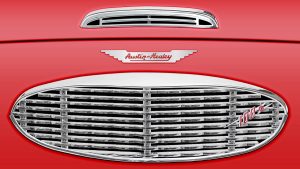
While the four cylinder Hundred was in production there were development cars that tried using the BMC 6 cylinder engine, the American market always liked more cylinders and it was also found that there could be a niche for a “four” seat Healey for those with young children but not quite ready for a saloon car. There were some BN3 prototypes produced to trial the ideas using the Hundred layout but space was very tight with an engine that was over 7 inches longer than the 4 cylinder block and reworking the rear shroud alone didn’t give much space for extra passengers.
The result of all this work ended up as the BN4 Hundred-Six, a slightly stretched chassis and modified bulkheads with longer doors gave us the profile we know so well and still managed to use the original front and rear wings to save tooling costs.
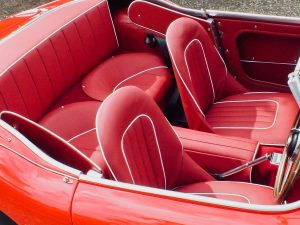
They initially overlooked the Austin identification system as really BN should indicate a 2 seater body but they eventually sorted this out when the 3000 model entered production. The production cars continued with the drum brake set-up of the 4 cylinder cars but with the coming of the 6 cylinder engine the 4 cylinder 100 S competition version was discontinued and there were a few disc brake sets left over, never one to waste money or an opportunity Donald Healey fitted some early 100-6 BN4’s with the Dunlop 4 wheel disc brakes, these could be used for competition and record breaking as well as evaluation and development. In the meantime, after market research showed there was still a requirement for a 2 seater Austin Healey, the rear bulkhead and shroud was reworked to give customers the option, this was designated the BN6.
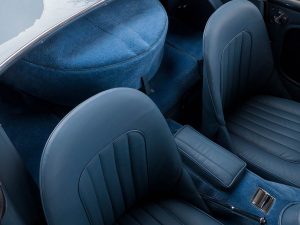
The early BN4’s were produced at Longbridge and used the BMC 6 cylinder engine as built for the saloon car range. This incorporated a very inefficient “gallery head” design which restricted performance and the new model was no quicker than the Four cylinder car. There was very quickly a re-design of the head to incorporate extra inlet ports and a separate manifold and this made for a much more responsive engine. This coincided with the introduction with the introduction of the 2 seat BN6 and some changes to the BN4 detail design and meant that Austin Healeys were produced alongside rival MG. For BMC this made sense as all their sportscar production was under one roof.
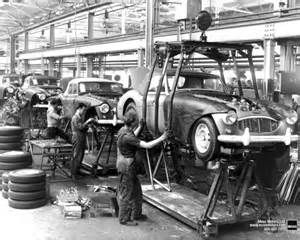
When it comes to the differences between BN4 and BN6 a preference really depends on how you intended to use it. The 4 seat option gave the possibility of squeezing two young children into the back [these were the days before isofix!] but the battery and spare wheel were moved into the boot so restricted lockable luggage space. The 2 seat option retained the batteries in front of the rear axle and the spare wheel over the axle giving an uncluttered boot floor with room for a couple of suitcases.
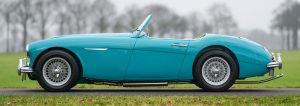
The BN6 two seater was the basis of the early competition cars developed by BMC and did quite well in continental Rallies, laying the foundation of the later successes with the 3000.
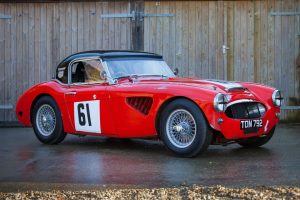
This is a very brief introduction to the Austin Healey Hundred-Six but there are many books that detail the development and history in more detail, so I hope this has whetted your appetite to find out more about the Austin Healey history.
Dave Holman 2021.
